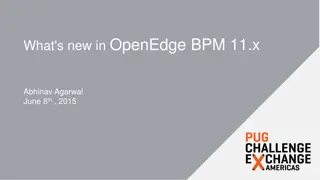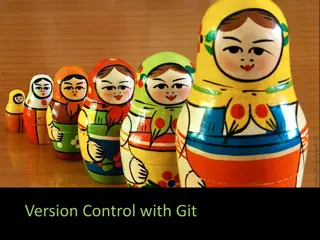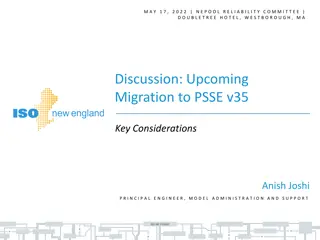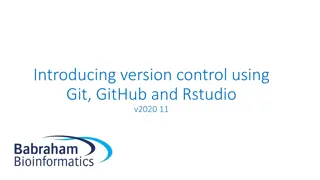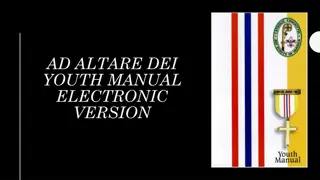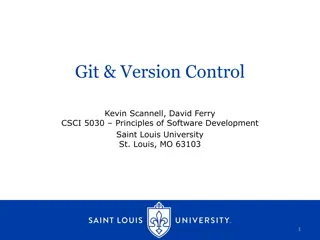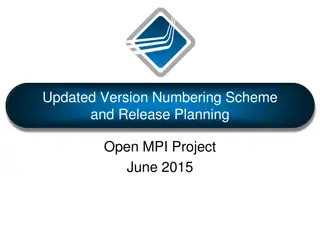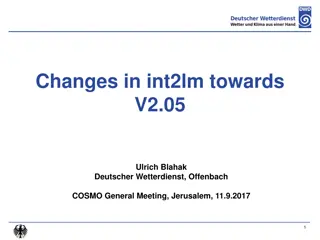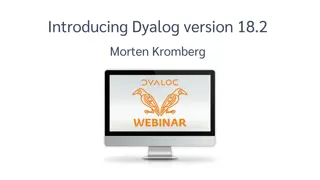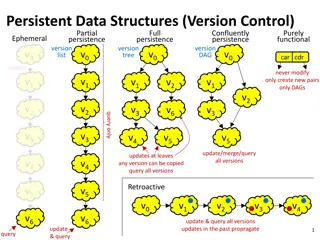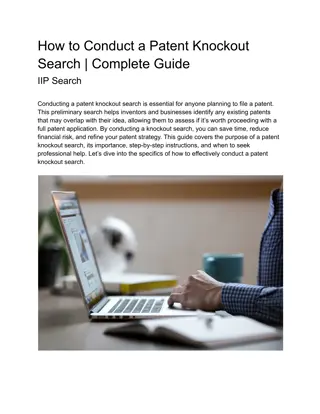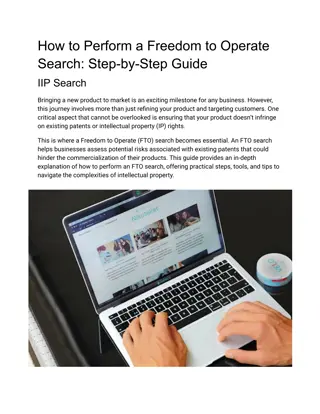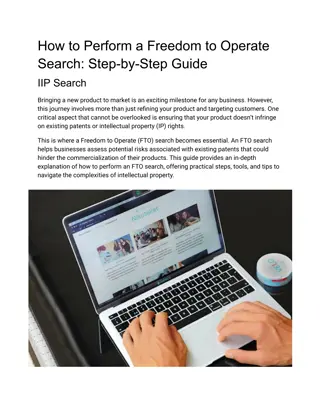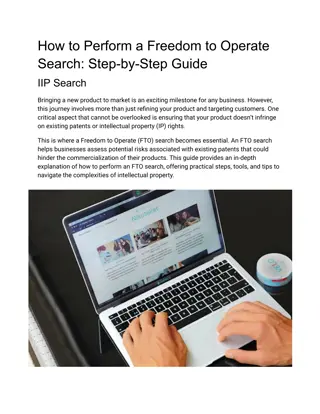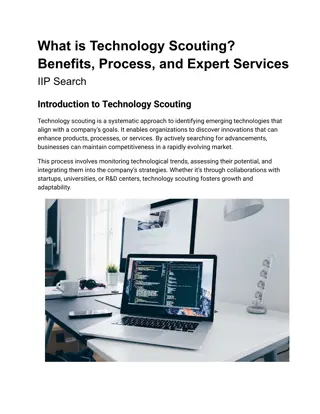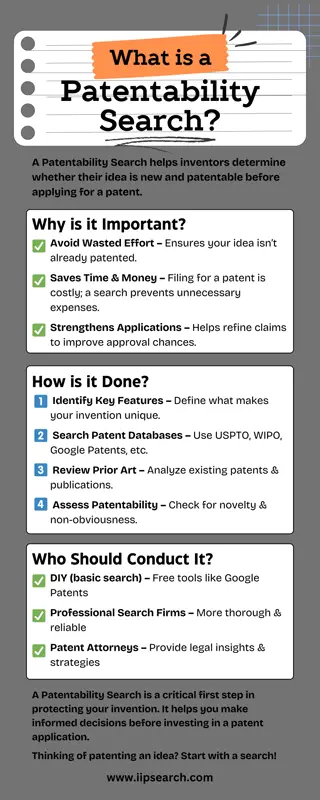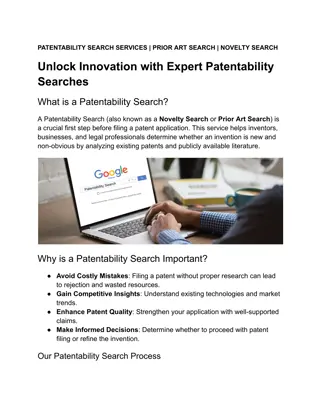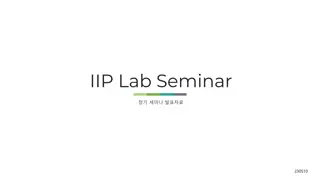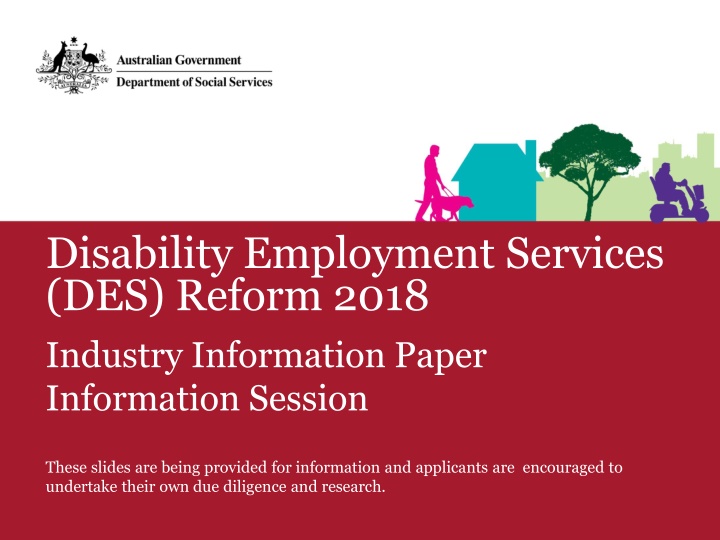
Reforming Disability Employment Services: Industry Insights 2018
Explore the 2018 reforms in Disability Employment Services (DES) through an informative session, including budget announcements, program workings, and service landscape details. Understand the flexible assistance offered to job seekers with disabilities, injury, or health conditions to enhance employment opportunities. Gain insights into DES providers and the two key services offered within the program, all aimed at maximizing job seekers' potential and sustainable employment outcomes. Discover the current DES provision landscape and the government's continued investment in index payments to providers.
Download Presentation

Please find below an Image/Link to download the presentation.
The content on the website is provided AS IS for your information and personal use only. It may not be sold, licensed, or shared on other websites without obtaining consent from the author. If you encounter any issues during the download, it is possible that the publisher has removed the file from their server.
You are allowed to download the files provided on this website for personal or commercial use, subject to the condition that they are used lawfully. All files are the property of their respective owners.
The content on the website is provided AS IS for your information and personal use only. It may not be sold, licensed, or shared on other websites without obtaining consent from the author.
E N D
Presentation Transcript
Disability Employment Services (DES) Reform 2018 Industry Information Paper Information Session These slides are being provided for information and applicants are encouraged to undertake their own due diligence and research.
Budget Announcement DES Reform Improvements to the Government s $3 billion plus investment in DES. Includes more than $300 million over the next ten years to index payments to DES providers. Existing contracts will continue to 30 June 2018. Existing DES providers offered new contracts for those current contracts that are 3 stars and above invitation to treat Industry Information Paper 2
DES and the disability service landscape National Disability Strategy (NDS) National Disability Insurance Scheme (NDIS) DES Not part of the NDIS but a complementary initiative under the NDS framework Provides access to tailored services for job seekers with disability to maximise their potential DES providers need to work with services provided under the NDIS Industry Information Paper 3
How does the current DES Program Work? Industry Information Paper 4
Disability Employment Services (DES) Flexible, individually tailored assistance for job seekers with disability, injury or health condition Both generalist and specialist services Both activity tested participants and volunteers Focus on appropriate, sustainable employment Independently assessed capacity for work Industry Information Paper 5
Two services within DES Disability Management Service (DMS) job seekers with disability, injury or health condition who require assistance to find sustainable employment, but who are not expected to need long-term support in the workplace Employment Support Service (ESS) job seekers with permanent disability who require long-term Ongoing Support in the workplace Industry Information Paper 6
Current DES Provision DSS currently contracts Around 119 DES providers In over 2,000 sites Across 110 non-remote Employment Service Areas (ESAs) Remote areas are covered by CDP (Community Development Program) administered by PM&C Industry Information Paper 7
Role of a DES Provider To provide tailored assistance into sustainable employment Build linkages and relationships with employers Assist employers to access financial support Connect participants to skills development Build linkages with other stakeholders Provide ongoing support in the workplace Help participants meet mutual obligations Industry Information Paper 8
Who is Eligible for DES? Job seekers who: have a disability, injury or health condition aged at least 14 to 65 years of age [tied to pension age] minimum legal working age in their state or territory have a future work capacity with intervention of at least 8 hours per week are an Australian resident (some exceptions apply) are not studying full time (unless the job seeker is an ESL) not working at or above their Employment Benchmark hours (some exceptions Job in Jeopardy, ADE workers) Industry Information Paper 9
How do Participants Register for DES? Centrelink referrals 91% Direct registration 8% Job in Jeopardy (JiJ) which assists at-risk workers (to be known as Work Assist from 2018) less than 1% NDIS future pathway Industry Information Paper 10
Assessments to determine DES eligibility Employment Services Assessment (ESAt) Job Capacity Assessment (JCA) Industry Information Paper 11
Current Pathway of a DES Participant Three phases: Employment Assistance commenced 63 per cent Post Placement Support 26 per cent Ongoing Support 11 per cent Industry Information Paper 12
DMS Caseload by Allowance type Industry Information Paper 13
ESS Caseload by Allowance Type Industry Information Paper 14
DMS Caseload by Future work capacity Industry Information Paper 15
ESS Caseload by Future work capacity Industry Information Paper 16
Commencements and Placements (DSS Annual Report 2015-16, Page92) Industry Information Paper 17
Eligible Participants not in DES Assessed Work Capacity per week STATE Total 8-14 hrs 15-22 hrs 23-29 hrs 30+ hrs n/a* 302 33 6 21 362 ACT 2,444 85 26 16 2,571 NSW 83,039 3,072 919 921 87,951 NT 3,418 50 19 28 3,515 QLD 48,912 2,213 657 711 52,493 SA 18,512 971 273 217 19,973 TAS 7,090 409 118 104 7,721 VIC 55,864 1,884 515 545 58,808 WA 16,092 872 256 250 17,470 Total 235,673 9,589 2,789 2,813 250,864 *Residential address overseas Source: DHS administrative data Industry Information Paper 18
DES Provider Payments Three primary DES provider payments Service fees quarterly, paid upfront Outcome fees paid in arrears Ongoing Support fees Flexible ongoing support - fee for service per participant Moderate and High paid in arrears, choice of quarterly or monthly per participant Two main types of Outcome fees Full Outcome Payments Pathway Outcome Payments Industry Information Paper 19
Other Types of Assistance Available Wage Subsidies Supported Wage System Employment Assistance Fund Job in Jeopardy (to be known as Work Assist) Industry Information Paper 20
Changes to DES from 1 July 2018 Industry Information Paper 21
Key DES Changes from 1 July 2018 Greater participant choice and control Greater competition and contestability Changes to the DES Funding Model Changes to Support in the Workplace School Leaver Trial Industry Information Paper 22
Increased Participant Choice and Control Greater choice of provider Choice of providers from across Employment Service Area boundaries Enhanced information technology solutions Flexible modes of contact Improved ability to transfer to another provider Industry Information Paper 23
Improving Competition and Contestability Between Providers Removal of market shares Initial five year term for panel of providers Subsequent grant application process for: new providers to enter the market business expansion by existing (high performing) providers Options to extend contracts up to 10 years Industry Information Paper 24
Pro-rated Service Fees Funding follows the participant if changing providers Funding for the period of assistance provided eg 4 weeks of a 13 week quarter Industry Information Paper 25
Rebalancing the split between Service Fees and Outcome Fees A bit higher outcome payments, on average A bit lower service fees, on average Rebalancing from approx. 60:40 service fees to outcome fees to approx. 50:50 (on current outcome rates) Provider revenue more dependent on success in getting people into work. Industry Information Paper 26
Risk-adjusted Outcome Fees Some participants require more support, some less, to get employment Participants assigned funding level based on likelihood of achieving employment outcome Five funding levels for each DMS and ESS Model will be recalibrated periodically Appendix 1 relative caseload by ESA Industry Information Paper 27
Employment Outcomes In addition to 13 and 26 week Outcome Fees 4-week outcome payment replaces Job Placement Fee participants work at least average benchmark hours for at least three weeks over a four week period 52-week outcome payment participants remain employed for 52 weeks at benchmark hours Industry Information Paper 28
Education Outcomes Eligibility for Full Outcome payments minimum Certificate 3 participants without a year 12 equivalent qualification Disability Support Pension recipients with Mutual Obligation requirements Yr-12 equivalent redefined from Cert 2 to Cert 3 13-week Pathway Employment Outcomes Evidence of course requirements being fulfilled Industry Information Paper 29
PaTH Internship Payment New outcome payment payable when DES participants: are aged 17 to 24 years inclusive; receive income support; have mutual obligation requirements; have received DES assistance for at least 6 months; and undertake an internship for an average of 15 to 25 hours for at least 4 weeks. Industry Information Paper 30
Indexation Annual indexation First indexation point 1 July 2019 Fee schedule for 2018-19 at Appendix 2 of the Industry Information Paper Industry Information Paper 31
Support in the workplace Ongoing Support Eight hour weekly minimum work hours for a DES participant to maintain eligibility for Ongoing Support Work Assist Replaces current Job In Jeopardy program Industry Information Paper 32
School Leaver Trial Two-year trial starting from 1 July 2018 Trial to extend support through DES to an additional cohort of students with disability in Year 12 Industry Information Paper 33
Provider Performance Industry Information Paper 34
DES Performance Framework The Performance framework includes: Star Ratings Certification of compliance against National Standards for Disability Services Industry Information Paper 35
Star Ratings Industry Information Paper 36
Consistent Underperformance Previously addressed through Business Reallocation Under new arrangements: Poorly performing providers may have contracts revoked if low Star Ratings over at least four consecutive quarterly performance periods. Industry Information Paper 37
Participant Compliance Framework New job seeker compliance framework from 1 July 2018 Real penalties for wilfully non-compliant Job seekers accrue a demerit for participation failures without a reasonable excuse After accruing four demerits, further non- compliance incurs 1-4 week non-payment period Industry Information Paper 38
Application Process Industry Information Paper 39
New Panel of DES Providers A Panel of DES providers will be established. Single application for delivery of DMS and/or ESS in line with requirements of the Disability Services Act 1986. Two stage grant application process. Industry Information Paper 40
Stage 1 Registration of Interest (ROI) Unrestricted ROI for ALL organisations wishing to provide DES after 1 July 2018 Indication of ESAs being applied for and for each ESA: Services to be delivered DMS and/or ESS Whether specialist and/or generalist services Organisations which do not register interest will not be eligible to proceed to Stage 2 Commencing in August and open for 4 weeks ROI will not be assessed Industry Information Paper 41
Invitation To Treat (ITT) Existing DES Providers who have registered in Stage 1 Invited to continue to deliver DMS and/or ESS in ESAs where DES provider is: Is performing 3-Stars or above for that service or those services Received new or additional business in 2016-17 reallocation process, or Received new or additional business due to gap filling arrangement in 2017 Industry Information Paper 42
Summary Table of Requirements Industry Information Paper 43
Stage 2 Grant Application Organisations which lodged ROI in Stage 1 invited to: Submit an application new providers, existing contracts below 3 Stars, existing providers wishing to expand service type or coverage Accept or decline an ITT 3 star or better contracts with continuing providers Non-competitive process Open for 6 weeks ITT will run separately alongside Grant Application process Industry Information Paper 44
Application Pack Application Form DES Grant Opportunity Guidelines (GoG) Draft Grant Agreement Preliminary Questions and Answers Information to be provided by an organisation Industry Information Paper 45
Organisation Level Details Organisation details on governance, strategies and proposed specialisations (if any) Experience and past performance in disability support, employment support or related services June 2017 Star Ratings will be available on Employment website from early August See Useful Information section of Paper for links Industry Information Paper 46
Ability to Provide Full Employment Service Area (ESA) Coverage Applicants will be required to: Nominate the proposed locations where the services will be delivered Describe how they will service the entire ESA Specify full-time, part-time and outreach locations Industry Information Paper 47
Specialist Services Providers Applicants can nominate to deliver services to one or more specialist client groups Client groups can be defined by: job seeker characteristics disability type Applications should include details of: expertise/strategies past performance in addressing specific needs Specialist providers must only accept job seekers within their speciality group Industry Information Paper 48
Who is eligible to apply? Legal entities, incorporated bodies and sole traders Eligible group entities A full description of group entities that are eligible to apply is provided on Page 21 of the Industry Information Paper. Industry Information Paper 49
Grant Application Assessment Applications will be assessed by DSS Community Grants Hub Assessment will take into account: ITT offers ESA Characteristics Coverage Diversity Meeting needs of specific client groups/job seekers in general Risks for Australian Government Risk of disruption for participants Industry Information Paper 50

